The Art of Container Gardening – A Simple Guide
Picture this: You step outside, and instead of a plain patio, it’s like a secret garden! Flowers overflowing with color, maybe the scent of herbs in the air…and the best part? You created it!
That’s the magic of container gardening. It doesn’t matter if you have a tiny balcony or a big yard – you can turn any space into your own little paradise.
Think of it like painting, but with plants! You choose the pots, the flowers, all the little touches that make it feel uniquely yours. And the amazing thing? Those plants grow and change over time, so your garden is always a work in progress.
Ready to get your hands dirty (in a good way!)? We’ll show you all the simple tricks to make your container garden dreams come true.
the Art of Container Gardening
Container gardening lets you get super creative! Even a tiny space can be an awesome garden. The key is picking the right plants and pots to match your style. Love bright colors?
There are flowers for that! Want something sleek and modern? There’s a plant for that too. Go wild – mix different textures, try different heights…make it your own little work of art!
Creativity in Small Spaces
Think your balcony’s too small for a garden? Think again! Container gardening is all about making the most of what you have – turning even a tiny patch of concrete into your own little paradise.
The secret is picking the perfect plants and pots. Want a burst of color? There’s a flower for that! Prefer something low-key and modern? We’ve got plants for that too. The fun part is mixing and matching – tall spiky ones, little trailing ones, crazy colors…it’s like painting with nature!
Don’t be afraid to experiment! Container gardening is about expressing your style and creating a space that makes you happy.
Your Garden and Patio
Container gardening is like turning your patio or balcony into a living art project – with plants as your paintbrushes and pots as your canvas! It’s the perfect way to make your patio or balcony feel like an extension of your home.
Picture this: Are you all about clean lines and modern style? Choose sleek pots and sculptural plants. More of a cozy cottage vibe? Go for overflowing baskets and tons of colorful blooms.
The best part? You can change it up whenever you want! Love those bright pink flowers now, but dreaming of a zen-like space later? Swap ’em out!
Don’t forget the little touches that add personality – a funny garden gnome, twinkly fairy lights, whatever makes YOU smile. Your container garden should be a place that feels totally, uniquely yours.
The Perfect Containers for Your Garden
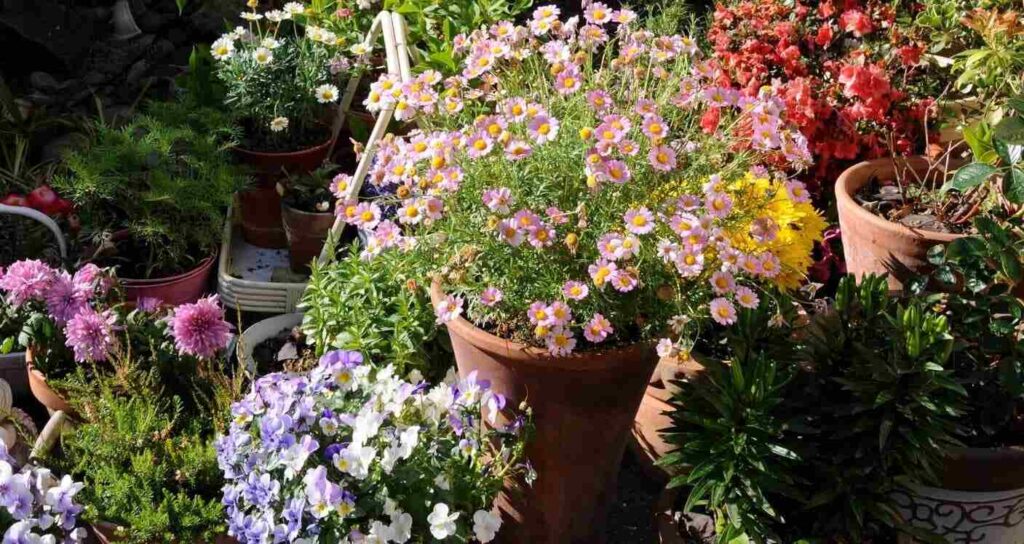
Choosing the right pots is like finding the perfect house for your plants! Here’s the lowdown:
- Material Matters:
- Clay pots: Great for plants that like drier soil. They look classic but can dry out fast on hot days.
- Plastic pots: Hold water longer, but that can be bad for some plants. Not always the prettiest, but super affordable.
- Get creative! Old buckets, tea tins, anything with a drainage hole can be a plant pot.
- Size it Up: Small pot = small plant. Big pot = room for roots to stretch out. Check your plant’s tag for how much space it needs.
- Style Points: Your pots should match your vibe! Modern and sleek? Simple shapes and colors. Love a cozy feel? Try weathered wood or brightly painted containers.
The most important thing? Make sure your pots have holes for water to drain out!
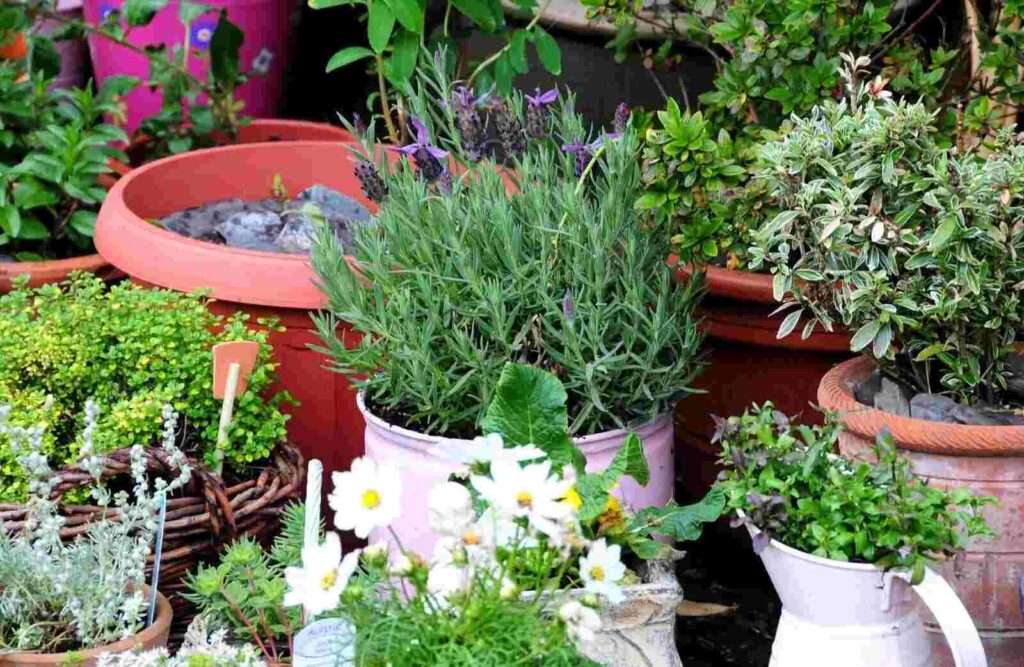
the Right Plants for Your Container
Picking the right plants for your containers is a bit like matchmaking! You want to find ones that will thrive in their new home and make your garden look amazing. Here’s what to keep in mind:
- Size Matters: Will your plant stay small and cute, or try to take over the whole pot? Check the tag for its full-grown size.
- Sunny or Shady? Some plants need tons of light, others prefer a chill spot. Match them to where you’ll put your containers.
- Team Players: You can mix plants in one pot, but make sure they like the same amount of water and sun. Nobody likes a roommate who hogs the bathroom!
With so many awesome plants out there, finding the perfect ones is part of the fun!
Assessing Growth at the Base of The Plant
Think of picking out plants like a treasure hunt…but you’re looking below the surface! Here’s how to spot the winners:
- The Root of It All: Gently lift the plant to peek at its roots. You want them to be white and strong – those are the ones full of energy! Brown, mushy roots? Leave those on the shelf.
- Stem Check: Look for a thick, sturdy stem without any breaks or squishy spots. A healthy stem means your plant is ready to take on its new home.
Remember, a strong start leads to a happy plant! Taking a minute to check those roots can save you from disappointment later on.
Checking for Pests and Healthy Foliage
Think of choosing plants like picking teammates – you want a strong, healthy crew! Here’s how to spot the all-stars:
- Bug Patrol: Check those leaves carefully! Holes, spots, or creepy crawlies? Nope! Those pests can spread like wildfire.
- Color Check: Leaves should be bright green (or whatever color they’re supposed to be.) Yellowing or wilting is a sign of trouble.
- Container Champs: Not all plants love pot life. Choose ones made for containers or ask someone at the garden center for help.
- Ditch the Swamp: Your pots need drainage holes so roots don’t drown. Make sure any plants you buy are used to containers.
A little bit of careful picking before you plant saves a lot of headaches later!
The Ideal Soil for Container Growth
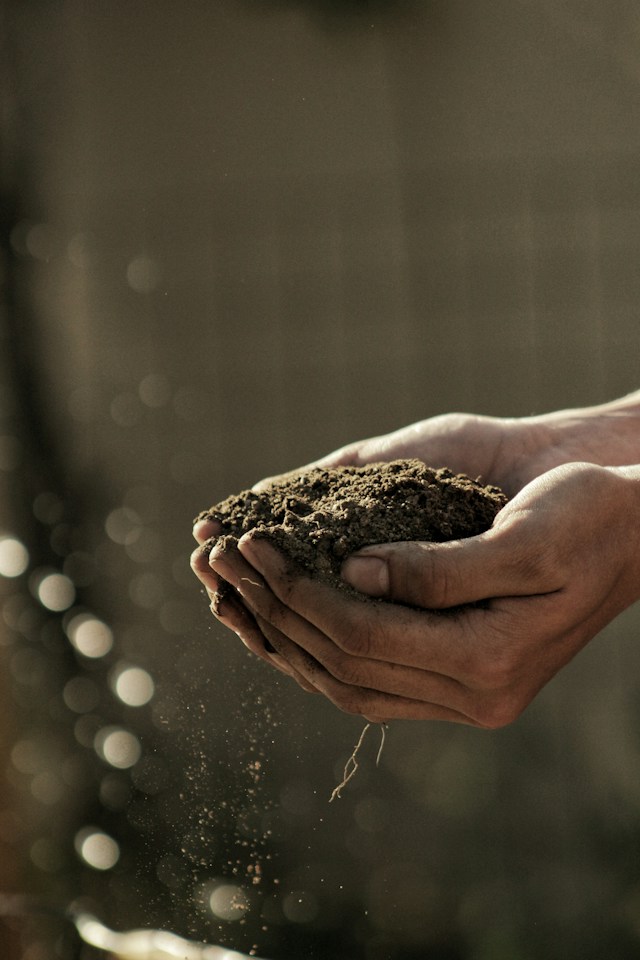
Forget the dirt from your yard – your container plants need something special! Here’s the deal:
- Potting Mix is a Must: Look for bags that say “potting mix” or “container mix.” These are light and fluffy, so roots can breathe and water drains easily. Plain dirt gets too hard.
- Power Boost: Mixing in a little compost is like giving your plants super vitamins! It adds good stuff that helps them grow strong.
- Drainage Check: See those holes at the bottom of your pots? Those are important! Your soil needs to let extra water flow out, or your plant could drown.
Choosing the right soil might seem boring, but it’s the key to happy, healthy container plants. Who wants droopy flowers and wilting leaves? Not you!
Container Placement and Sunlight Exposure
Think of your plants like sunbathers! Some love to soak up those rays, while others need a shady spot to chill out. Here’s the trick:
- Sun Worshippers: Need at least 6 hours of full, direct sunlight each day. Think tomatoes, sunflowers, anything that blooms like crazy.
- Part-Time Sunners: These guys are happy with a mix of sun and shade – perfect for a porch that gets morning sun but afternoon shade.
- Shade Lovers: Delicate leaves that burn easily? These plants belong in spots that never get harsh, direct sun.
Before you buy, check the plant tag – it’ll tell you what kind of light your plant craves. Match the plant to the spot you have, and it’ll be a happy camper!
Adjusting for Sun, Partial Shade, and Full Shade
Figuring out where to put your containers is all about matching sunlight to your plants’ needs. Here’s how:
Step 1: Know Your Plants
- Check the Tag! It’ll say if your plant needs “full sun”, “part sun”, or “shade”.
Step 2: Find the Right Spot
- Full Sun: Gets at least 6 hours of strong, direct sunlight every day. Perfect for plants like tomatoes or sunflowers that love to soak up those rays.
- Part Sun: These plants like a mix of sun and shade. Think of a porch that gets sun in the morning but shade later in the day.
- Shade: These plants need protection from strong, direct sun. Put them under trees, on covered patios, or any spot that stays shady most of the time.
Bonus Tip: Even sun-loving plants might get too hot in the middle of a scorching day! If possible, give them a few hours of afternoon shade to keep them from getting stressed.
Positioning for Balance and Aesthetics
Think of arranging your containers like organizing a bookshelf. You want everything visible and easy to access for watering. Here are some tips:
- Tallest in Back: Put your biggest plants in the back row, or in the middle if your container can be seen from all sides. This prevents them from blocking sunlight for smaller plants.
- Vary the Heights: Use different sized containers to add visual interest. A cluster of all the same height can look a bit boring.
- Avoid Crowding: Leave some space between plants. They need room to grow, and good airflow helps prevent diseases.
Don’t be afraid to experiment! Move things around until you find a layout that looks balanced and lets you easily reach each plant.
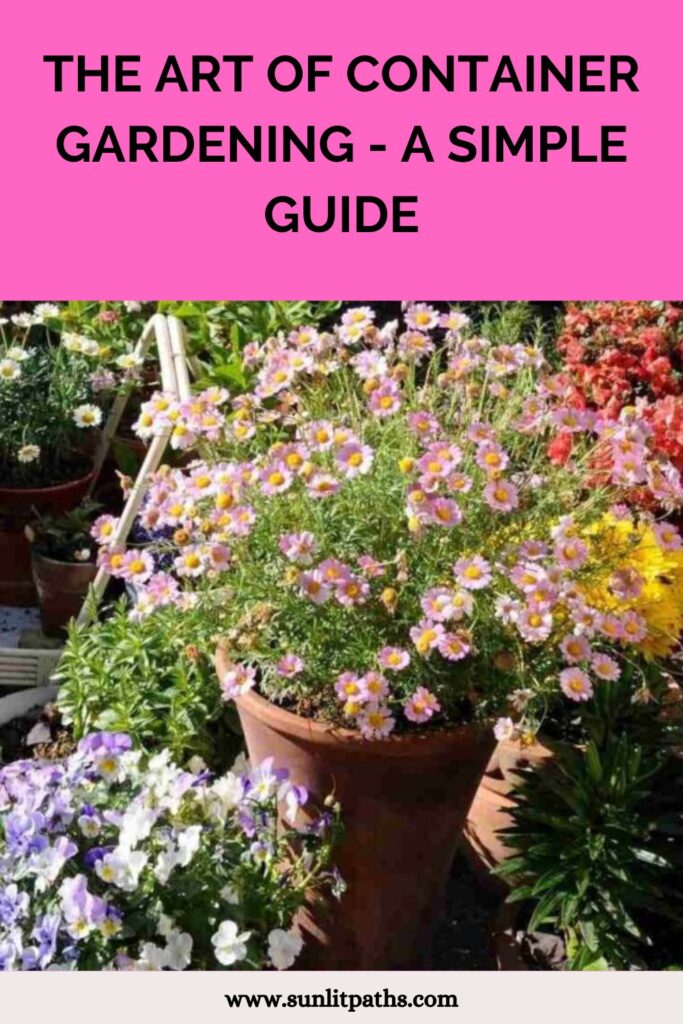
Strategies for Watering Your Container Garden
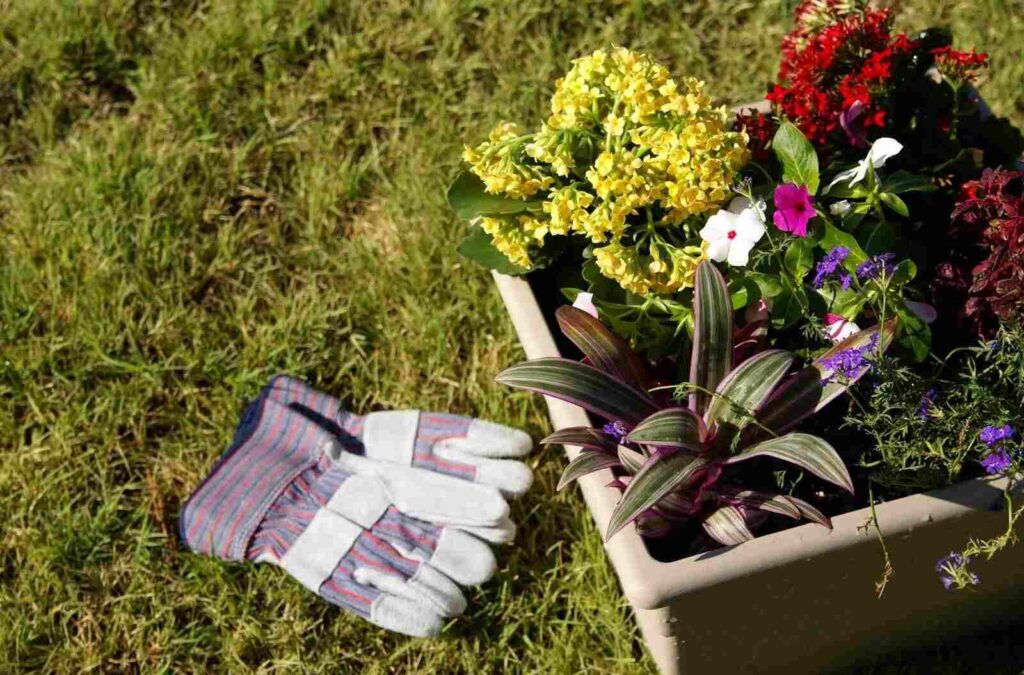
Plants in pots get thirsty! Because they don’t have a huge area of soil to draw water from, it’s up to you to keep ’em hydrated. Here’s the easy way:
- The Finger Test: Poke your finger about an inch into the soil. Dry? Time to water! Still a little damp? Wait another day or two.
- Give ‘Em a Drink: Water slowly until you see some coming out the drainage holes at the bottom of the pot. This means the roots got a good soak.
- Don’t Overdo It: Soggy soil is bad news! Most plants like to dry out a bit between waterings.
Pro-Tips:
- Bigger pots dry out slower than small ones.
- Plants in full sun need more water.
- Self-watering pots are awesome if you tend to forget!
A little attention goes a long way, and your plants will reward you for keeping them happy!
The Thriller, Filler, Spiller Design Technique
The “thriller, filler, spiller” technique is a simple way to make your container gardens look amazing. Here’s how it works:
- Thriller: This is your tallest plant. It’s the focal point, so pick something eye-catching – upright leaves, big flowers, etc.
- Filler: These plants go around the thriller, filling in the middle of the container. Choose ones with a different texture or color to add interest.
- Spiller: These are trailing plants that drape over the pot’s edge. They soften the overall look and make the container feel full.
This technique helps you create a mix of heights and textures, which is always visually appealing. Don’t be afraid to experiment with different plant combinations!
Centerpiece Plant Selection: Thrillers
Thrillers are the stars of your container garden! They add that “wow” factor with height and drama. Here’s how to find the perfect one:
- Reach for the Sky: “Thriller” plants stand tall. Look for ones with strong, upright stems or leaves that point upwards.
- Think Outside the (Flower) Box: Bold leaves, crazy textures, even tall ornamental grasses can all be thrillers.
- Examples to Get You Started:
- Sunflowers for a burst of cheerful yellow
- Upright succulents for a modern look
- Tall, wispy grasses that sway in the breeze
Remember, the thriller sets the tone for the whole container, so choose something that speaks to you!
Choosing Complementary Fillers
Fillers are the glue that holds your container garden together! They add color, fluff up the space around your thriller, and make the whole thing look polished. Think of them like these:
- Texture Time: Fillers can be smooth, wispy, spiky…choose ones that contrast with your thriller for extra interest.
- Blooming Beauties: Petunias, lantana, and other flowering plants make great fillers, adding non-stop color all season long.
- Foliage Focus: Don’t forget plants with colorful leaves! They add interest even when they aren’t blooming.
The best fillers are team players – they’re pretty, but they don’t try to steal the spotlight from your thriller plant!
Incorporating Edges with Spillers
Spillers are like waterfalls of leaves and flowers! They tumble over the edge of your pot, adding a touch of wildness and making the whole container feel extra lush.
Picture this:
- Color Bursts: Brightly colored trailing flowers are like fireworks spilling over your pot.
- Leafy Curtains: Plants with long, flowing leaves create a soft, romantic look.
- Spiller Superstars: Look for sweet potato vine (it comes in lots of colors!), creeping jenny, or trailing petunias for spillers with major impact.
Ready for the best part? Thrillers, fillers, and spillers work together to make your container garden look amazing from every angle!
Perennials for Year-Round Beauty
Think of perennials as the gift that keeps on giving! Plant them in a container once, and they’ll come back every year. Here’s why that’s awesome:
- Less Work, More Beauty: You don’t have to replant every season, so you have more time to just enjoy your garden.
- Mix and Match: Choose some perennials with pretty leaves that look good all year, along with some that burst into flower at different times.
- Pollinator Power: Lots of flowering perennials (like coneflowers) are magnets for bees and butterflies!
Tips for Choosing the Right Perennials:
- Check the Size: Make sure it won’t outgrow its pot too quickly.
- Sun or Shade: Just like other plants, perennials need the right amount of light.
- Ask for Help: Garden center staff can point you towards perennials perfect for containers.
With a little planning, you can have a container garden that looks amazing all year long!
Importance of Fertilizing and Nourishing Your Plants
Think of fertilizer as super-vitamins for your plants! Because they’re growing in a pot, they can run out of important nutrients faster than plants in the ground. That’s where fertilizer comes in:
- Easy Options: Look for fertilizer made for containers. It’ll have all the good stuff in one package. Lots of these are slow-release, meaning you only need to use them every few weeks.
- Don’t Overdo It: More fertilizer is NOT always better. Too much can actually hurt your plants. Always follow the directions on the package!
- Natural Boost: Compost is like healthy snacks for your plants! Stir a little in with the potting mix, or sprinkle some around the top.
- Watch and Learn: If your plants look pale, grow slowly, or don’t have many flowers, they might need a little fertilizer boost.
A little bit of plant food goes a long way. You’ll be amazed at how much healthier and happier your container garden looks!
Regular Pruning and Maintenance for Vigorous Growth
Keeping your container plants tidy makes a huge difference! It’s simple, but helps them grow stronger and look prettier. Here’s how:
- Snip, Snip: See any brown or dead leaves or flowers? Cut them off! This helps the plant focus on new, healthy growth.
- Flower Power: Once flowers fade, pinch them off. This tricks the plant into making MORE flowers instead of going to seed.
- Shape Up: Plants getting a little too wild and bushy? Trim them back to keep the shape you like.
- Bug Patrol: While you’re pruning, look for chewed leaves, weird spots, etc. Catching pests early makes them way easier to fix.
Think of it like getting a haircut – a little maintenance goes a long way. You’ll be amazed how a few minutes of pruning keeps your container garden looking its best!
You might also like:
- What Is The Difference Between Kayaking And Canoeing?
- The History And Evolution Of Kayaking As A Water Sport
- How Much Do Kayaks Weigh? – Find Out Here!
Effective Pest Control Measures
Pests are a gardener’s worst nightmare, but containers make it easier to fight back! Here’s the deal:
- Be a Plant Detective: Check your plants often! Look under leaves, along stems…are there tiny bugs, sticky spots, or holes? Catching problems early is key.
- Know Your Enemy: Aphids, spider mites, and mealybugs are common bad guys in containers. Learn what they look like!
- Weapons of Choice:
- Soapy water blast for small infestations
- Insecticidal soap for tougher battles (follow the instructions carefully!)
- Ask for help at the garden center if you’re not sure what to use
Remember, healthy plants are tougher! Proper watering, sunlight, and occasional fertilizer make it harder for pests to take over.
Identifying Common Pests
Think of pests like tiny villains trying to attack your plants! The good news is, with containers, it’s easy to spot them before they do too much damage. Here’s what to watch for:
Common Bad Guys:
- Aphids: Tiny, sap-sucking bugs that leave sticky stuff behind
- Mealybugs: Look like fluffy white spots, especially near where leaves join the stem
- Spider mites: Super small, but might leave fine webbing. Leaves get speckled.
Signs of Trouble:
- Chewed-up leaves (caterpillars, beetles…)
- Yellowing or discolored leaves
- Sticky “honeydew” on the plant
The sooner you spot pests, the easier they are to get rid of! Check your plants every few days, especially undersides of leaves.
Organic and Chemical Control Options
You have options when it comes to battling garden pests! Here’s the breakdown:
Natural Solutions:
- Insecticidal Soap: Works on lots of bugs, but it needs to touch them directly to work. Great for small infestations.
- Neem Oil: Disrupts how certain bugs grow and eat. It’s a good preventative, too.
When to Go Stronger:
- Pesticides: If natural methods aren’t working, or the infestation is out of control, these might be necessary.
- Important!: Read the label! Some pesticides are safer to use around food plants than others.
No matter what you choose, the key is to act quickly. Don’t let those pests ruin your hard work!
The Concept of Companion Planting
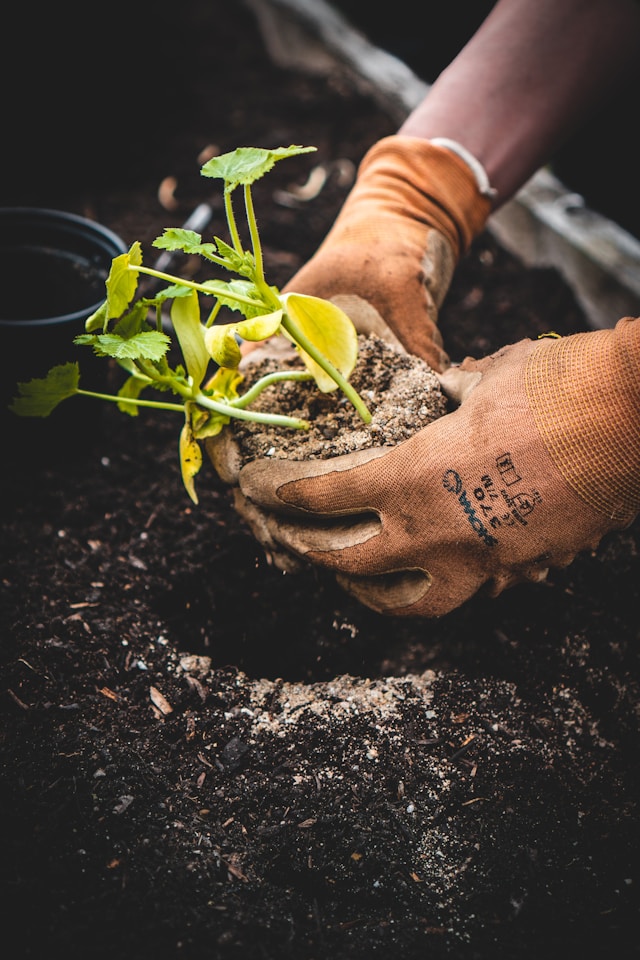
Companion planting is a smart way to make the most of your container space and help plants thrive. The idea is to plant different things together that benefit each other.
Here’s how it works:
- Pest Protection: Some plants (like marigolds) release scents that keep bugs away from other plants (like tomatoes).
- Flavor Boost: Certain herbs planted near vegetables can actually improve their taste!
- Maximize Space: Plant fast-growing crops (like radishes) with slow-growers (like carrots). Harvest the quick ones while the others are still getting started.
It takes a little research to find the best combos for your specific plants, but it’s worth it! Think of it as a way to help your garden work smarter, not harder.
Accessorizing with Container Gardening Decor
Think of accessorizing your container garden like decorating your room! It’s a chance to add your own special touches and make it feel uniquely yours. Here are a few ideas:
- Up, Up, and Away!: Trellises give climbing plants a place to go, like beans or morning glories. They also add height, which looks cool!
- Fun & Fancy: Garden gnomes, fountains, colorful gazing balls…anything that makes YOU smile!
- Pots with Personality: Don’t be afraid to mix styles! Big, small, bright colors, weathered finishes…choose pots that fit your vibe.
- Twinkle Time: String lights around your containers turn your garden into a magical place at night.
- Playful Touches: Weatherproof flags, pinwheels, or even an old teacup turned into a tiny planter add a touch of whimsy.
Remember, there’s no right or wrong! The goal is to create a space that you love spending time in.
Maximizing Small Spaces with Creative Container Solutions
Got a tiny balcony or patio? No problem! Container gardening is like having a magic wand for small spaces. With a little creativity, you can turn even the smallest spot into your own green oasis.
Ready to get inspired? Here are two awesome ways to maximize your space:
Leveraging Vertical Space with Hanging Planters
Think up, not out! When you don’t have much floor space, using your walls and even the ceiling lets you grow way more plants.
Picture This:
- Hanging Baskets: Imagine flowers spilling over the side of a basket hung from your balcony railing…instant garden vibes!
- Wall of Green: Special pockets that hang on your wall or fence let you plant herbs, flowers, anything! It’s like living artwork.
Bonus: Going vertical makes your space look taller and more interesting – a total win-win!
Optimizing Balconies and Patios
The way you arrange your containers makes a big difference in how your small space looks and feels. Here’s how to make it work:
- Use Shelves: Tiered plant stands or basic shelves let you display more plants without taking up extra floor space.
- Think Vertical: Hanging baskets and window boxes add plants without crowding the ground.
- Vary the Heights: Use a mix of tall, medium, and short containers, plus hanging ones. This looks more interesting.
- Don’t Overcrowd: You still need space to walk, water your plants, and enjoy the space!
With a little planning, even a tiny balcony or patio can feel like a lush garden escape.
The Art of Container Gardening: Transforming Urban Spaces
Container gardening is perfect for city living. It lets you grow flowers, herbs, even veggies, no matter how small your outdoor space might be.
The best part? Watching your garden grow! There’s something special about tending to your plants and seeing something beautiful come from your own hard work.
Container gardening is a way to bring nature back into the city. Think of it as creating your own little sanctuary in the middle of the hustle and bustle.
Conclusion
Think your balcony’s too small for a garden? Or that you need a green thumb to even try? Think again! Container gardening is like a magic trick – you can grow amazing stuff in the tiniest spaces.
Here’s the deal:
- You’re the Boss: Want flowers, veggies, herbs? It’s up to you! Pick plants that make you happy, and pots that match your style.
- Super Easy: Seriously, if you can water a houseplant, you can handle this. We’ll teach you the simple tricks that make container plants thrive.
- Instant Upgrade: Imagine stepping outside to see bright flowers or smelling fresh basil instead of…boring concrete. It changes everything!
Don’t think you have to be an expert or have tons of space. Container gardening is for everyone! Give it a try – you might surprise yourself with how much you love it.
